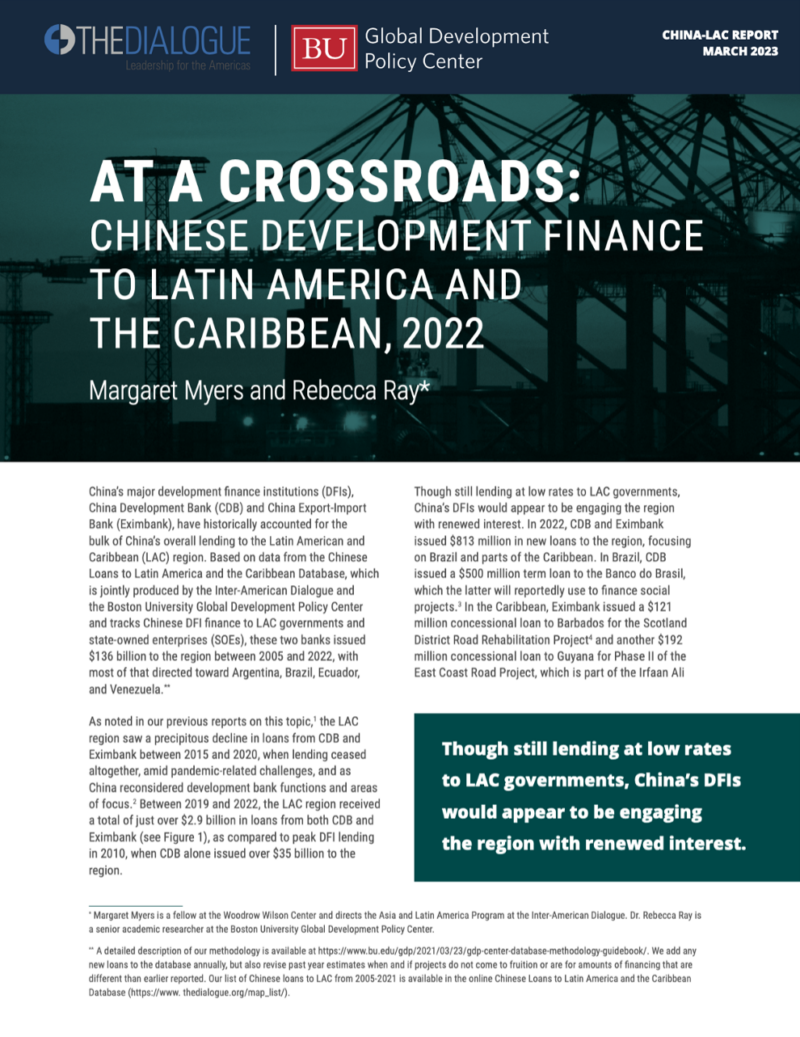The Politics Of Disaster Relief
After a 7.0 magnitude earthquake struck Haiti, the aftershock reached China in ways that few anticipated.The earthquake forced Chinese leaders to navigate the tricky politics of disaster relief.
Again this year, China's development finance institutions (DFIs)—China Development Bank (CDB) and the Export-Import Bank of China (Eximbank)—issued relatively limited amounts of finance to Latin American and Caribbean (LAC) governments or state-run companies, according to findings from the Inter-American Dialogue's Asia and Latin America Program and the Boston University Global Development Policy Center (GDP).
At the same time, the US$813 million issued by China's DFIs in 2022 amounts to an uptick in activity, and a possible indication of renewed interest in financial engagement on certain types of projects. Our newly-published report, At a Crossroads: Chinese Finance to Latin America and the Caribbean, 2022, examines China's newest DFI lending to the region, individual country debt scenarios, and the growing importance of other-than-DFI sources of Chinese finance in LAC.
See the newly-updated Chinese Loans to Latin America and the Caribbean Database for information on China's sovereign lending to LAC since 2005.
China’s DFIs have spent considerable time in recent years renegotiating the terms of existing agreements with the region. There are indications that China’s banks will be engaged in even more negotiations on the terms of public and publicly guaranteed debt in the coming months and years.
After a 7.0 magnitude earthquake struck Haiti, the aftershock reached China in ways that few anticipated.The earthquake forced Chinese leaders to navigate the tricky politics of disaster relief.
What should we expect from a newly powerful Brazil? Does the country have the capacity and leadership to be a central actor in addressing critical global and regional problems?
President Lula da Silva triumphantly announced that he and his Turkish counterpart had persuaded Iran to shift a major part of its uranium enrichment program overseas—an objective that had previously eluded the US and other world powers. Washington, however, was not applauding.
